Seventy years ago, on Aug. 20, 1953, a slender white single-stage missile lifted off from Pad 4 at Cape Canaveral, Florida. This first launch of a Redstone missile inaugurated a new chapter in America’s rocket and space program, with a legacy lasting more than 20 years. Followed by numerous flight tests, the Redstone intermediate-range ballistic missile entered service with the U.S. Army in 1958. Beyond its military applications, the Redstone served as the first stage of the rocket that launched America’s first satellite, lofted America’s first astronauts into space, and served as a component in the first of the Saturn family of rockets that eventually sent the first humans to the Moon.
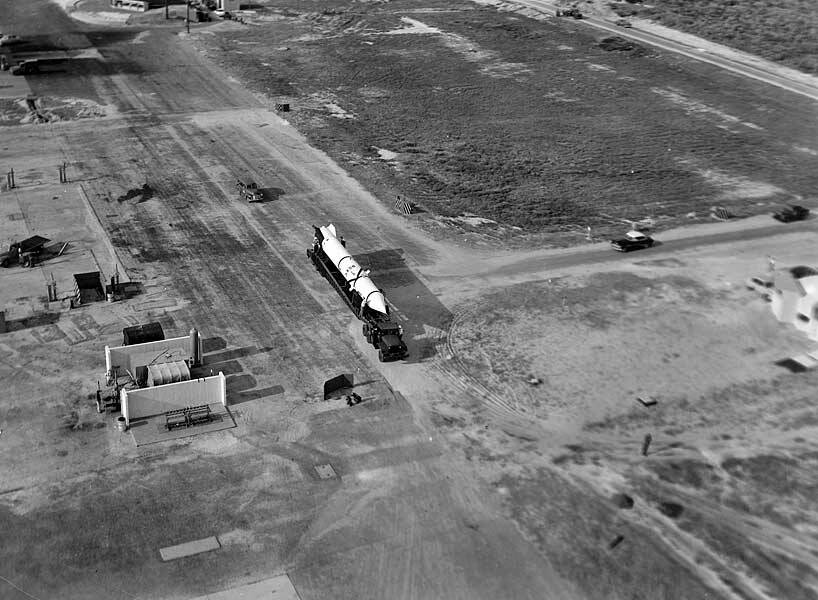

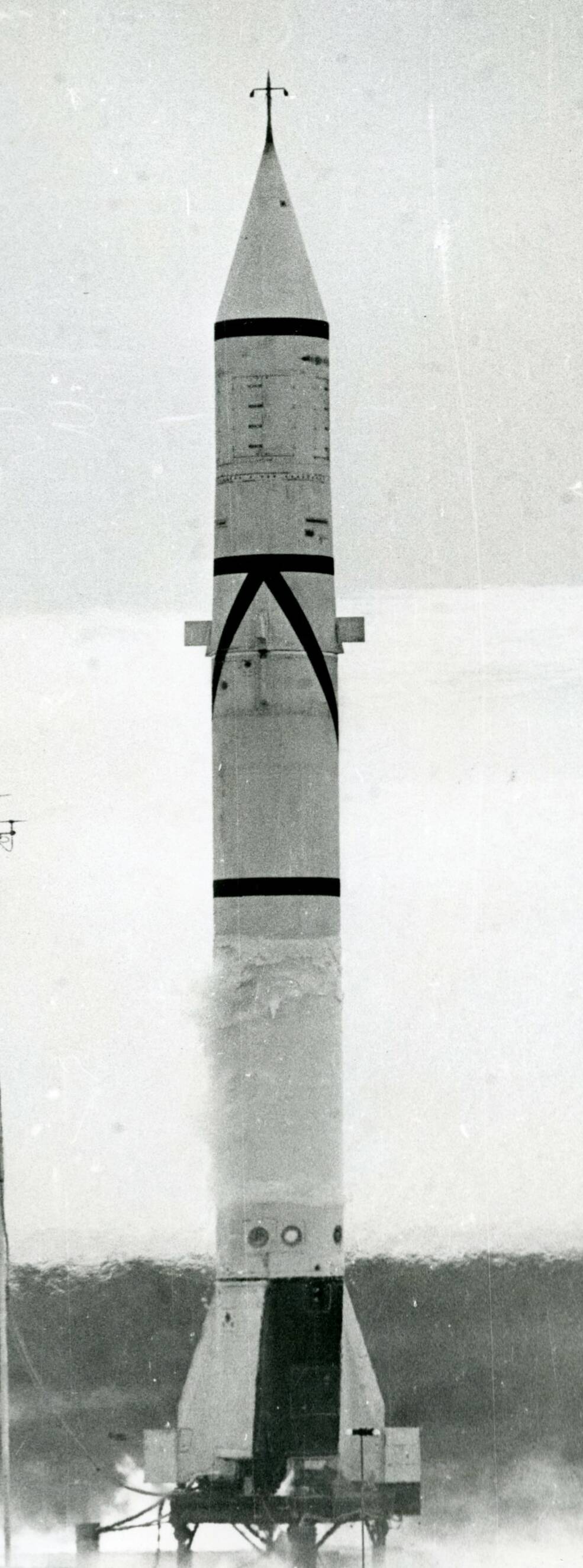 Left: A truck carries a Redstone rocket toward Pad 4 (just out of view at bottom) at Cape Canaveral, Florida. Middle: Engineers prepare the Redstone rocket for its first flight. Right: Ignition of the Redstone rocket for its first launch.
Left: A truck carries a Redstone rocket toward Pad 4 (just out of view at bottom) at Cape Canaveral, Florida. Middle: Engineers prepare the Redstone rocket for its first flight. Right: Ignition of the Redstone rocket for its first launch.
Following World War II, the United States tested captured German V-2 missiles at both the White Sands Proving Ground in New Mexico and at Cape Canaveral in Florida. In 1950, to fill a need for more advanced ballistic missiles, the U.S. Army’s Ordnance Guided Missile Center (OGMC), based at the Redstone Arsenal in Huntsville, Alabama, began developing a new rocket, naming it after the arsenal. A team led by Wernher von Braun, recently reassigned to the OGMC in Huntsville, designed the new Redstone missile. To speed up development, the team adapted the engine from the Navaho missile, built by North American Aviation’s Rocketdyne division, that used a mixture of 75 percent ethyl alcohol and 25 percent water as fuel and liquid oxygen as oxidizer. The Redstone rocket produced 77,200 pounds of thrust at liftoff and could deliver a warhead 200 miles away. The first Redstone launch took place from Pad 4 at Cape Canaveral on Aug. 20, 1953. The rocket flew for one minute 20 seconds before its engine failed, falling into the Atlantic Ocean about four miles downrange. In June 1958, after a series of successful test flights, the Army declared the Redstone operational as the first U.S. ballistic missile and deployed it to units in West Germany. The Redstone remained operational until 1964, when the more advanced Pershing missile replaced it.
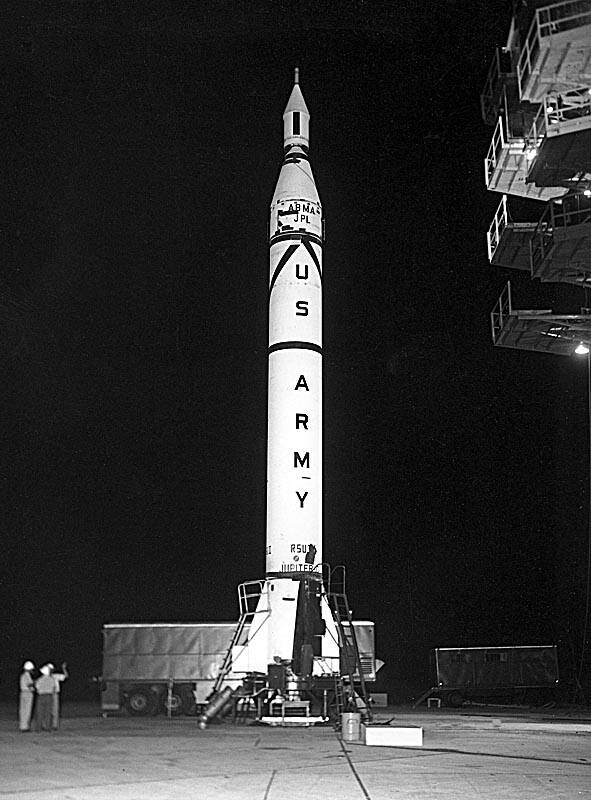

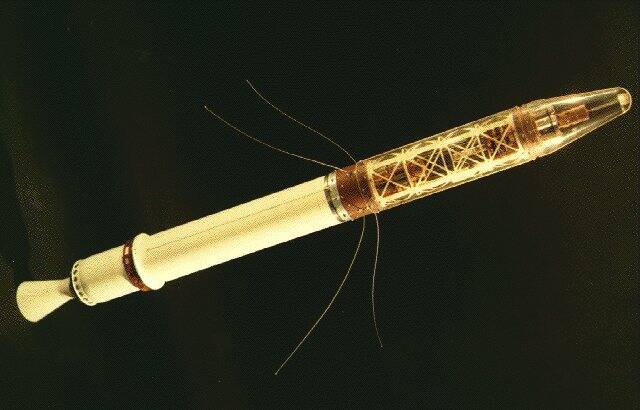 Left: Engineers prepare a Jupiter-C rocket in September 1956. Middle: Launch of Explorer 1 on a Juno I rocket on Jan. 31, 1958. Right: A model of Explorer 1 as it would appear in orbit.
Left: Engineers prepare a Jupiter-C rocket in September 1956. Middle: Launch of Explorer 1 on a Juno I rocket on Jan. 31, 1958. Right: A model of Explorer 1 as it would appear in orbit.
Besides its military uses, the Redstone had applications in the scientific community. With an enlarged fuel tank and the addition of two nested solid-fuel upper stages, the Redstone evolved into the Jupiter-C research rocket. On the first of its three launches on Sept. 20, 1956, a Jupiter-C lifted a dummy satellite to an altitude of 682 miles and a distance of 3,335 miles, reaching a speed of 16,000 miles per hour, just shy of orbital velocity. The addition of a solid-fuel fourth stage converted the Jupiter-C to the Juno I rocket, the first of which launched Explorer 1, the first American satellite in orbit, on Jan. 31, 1958.
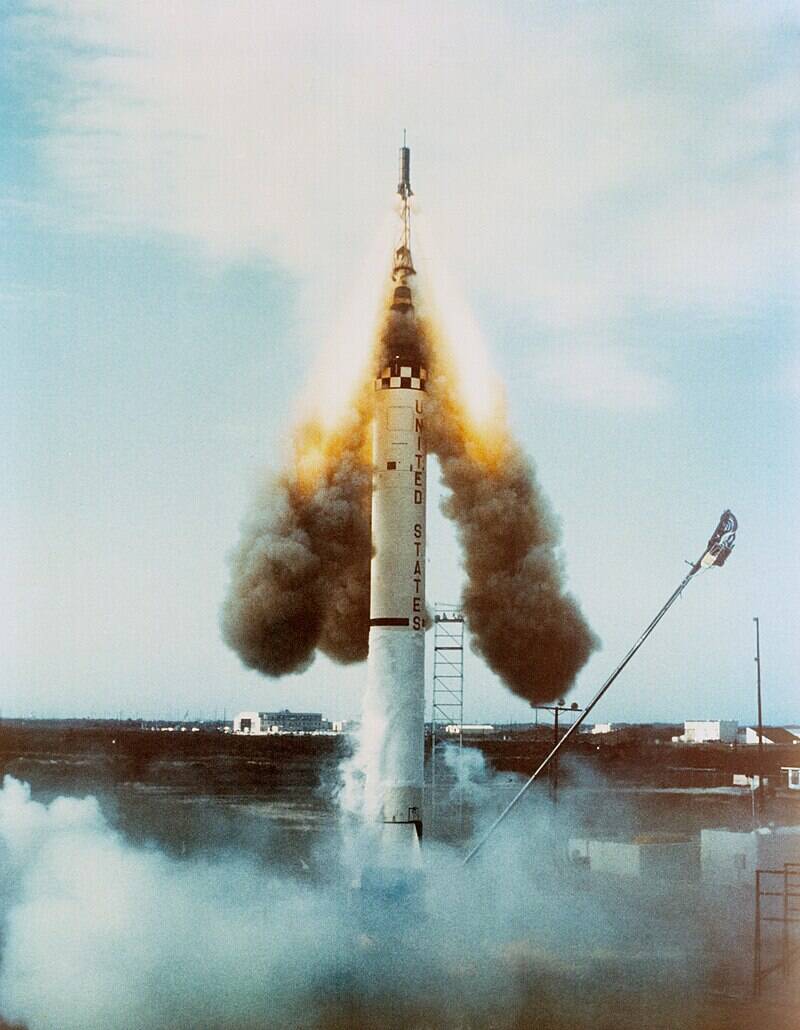
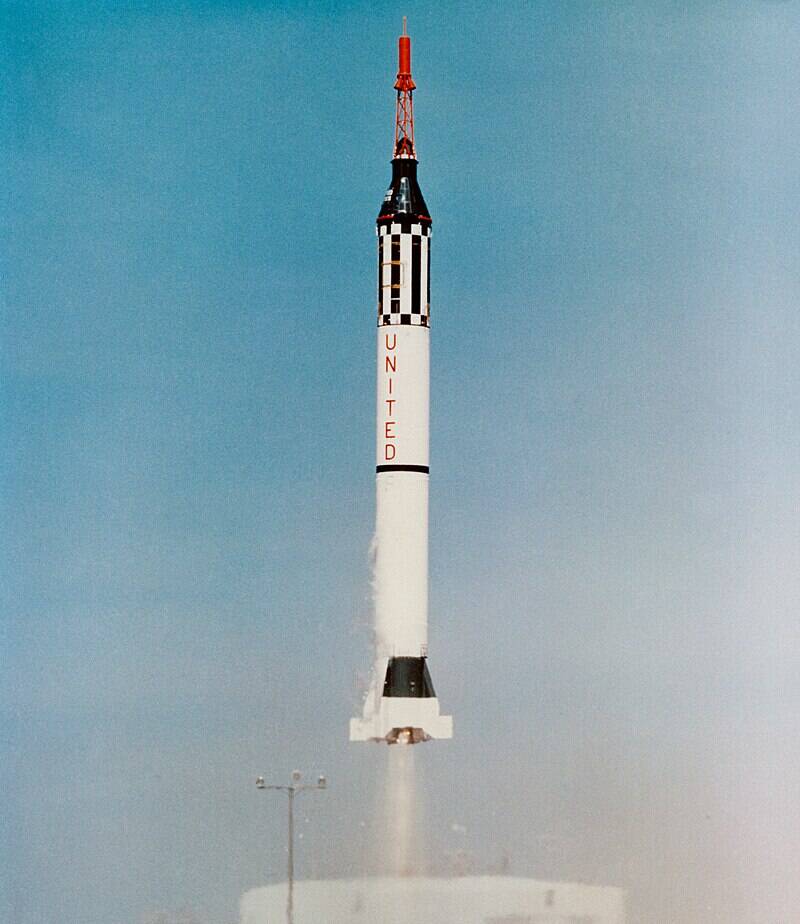
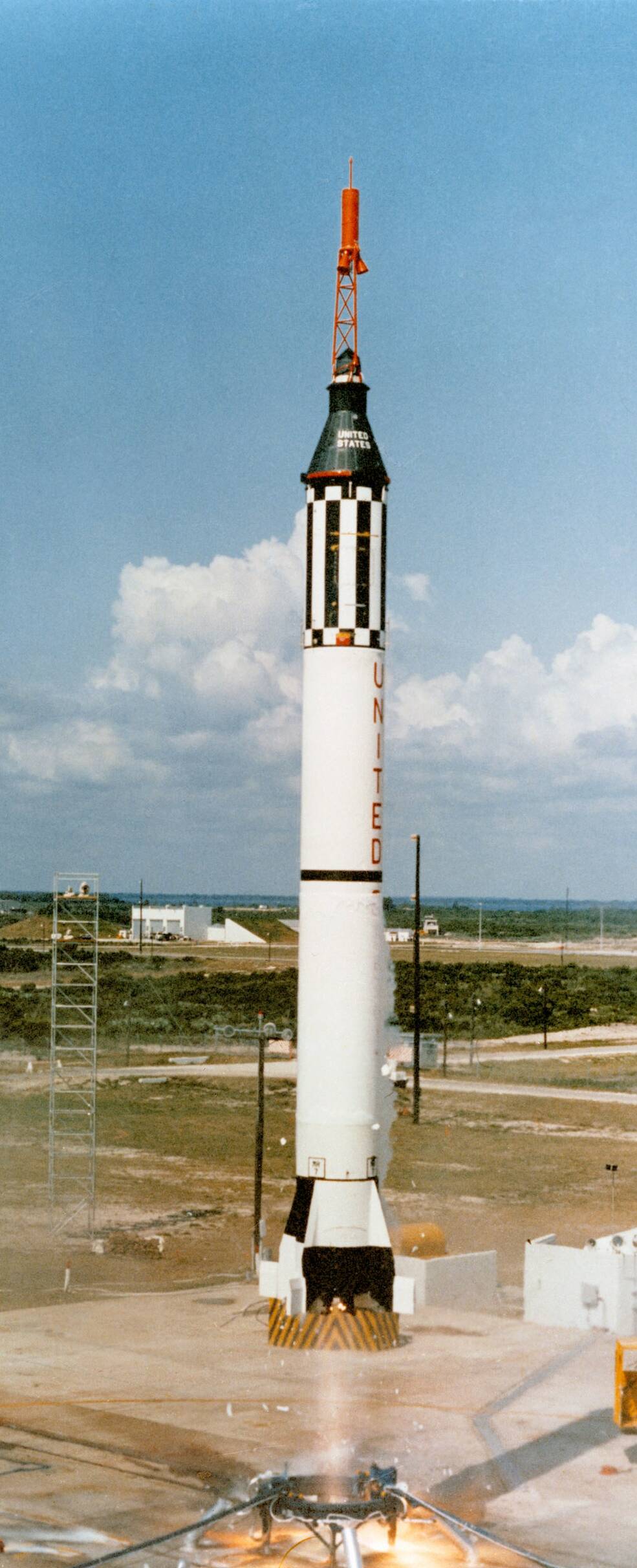 Left: The firing of the escape rocket during the unsuccessful launch of Mercury-Redstone-1 (MR-1). Middle: The first successful launch of a Mercury-Redstone, MR-1A. Right: Launch of MR-3 carrying astronaut Alan B. Shepard, the first American in space.
Left: The firing of the escape rocket during the unsuccessful launch of Mercury-Redstone-1 (MR-1). Middle: The first successful launch of a Mercury-Redstone, MR-1A. Right: Launch of MR-3 carrying astronaut Alan B. Shepard, the first American in space.
The Redstone rocket played a key part in America’s fledgling human spaceflight program. The U.S. Army agreed to provide Redstone rockets to the newly formed Project Mercury to place American astronauts into space. Not powerful enough to send the Mercury capsule into orbit, the Redstone provided shorter suborbital flight opportunities to test the spacecraft and the astronaut’s reaction to short-term weightlessness. The first launch attempt of a Mercury-Redstone, designated MR-1, on Nov. 21, 1960, did not go according to plan. After ignition, the Redstone’s engine cut off, with the rocket rising about four inches before settling back on the pad. Next, the launch escape system’s rocket ignited but without taking the capsule with it, followed by deployment of the spacecraft’s drogue and main parachutes, with the fully fueled rocket still on the pad. The capsule remained undamaged through the incident and after mating it with another Redstone rocket, the MR-1A mission completed a successful flight on Dec. 19. The MR-2 mission on Jan. 31, 1961, carried the chimpanzee Ham on a suborbital flight. Because the Redstone’s engine suffered an over thrust issue, managers added a booster development MR-BD mission on March 24. It succeeded and cleared the next mission, MR-3 on May 5, to carry astronaut Alan B. Shepard, the first American in space, on a 15-minute suborbital flight. Virgil I. Grissom essentially repeated the flight on MR-4 on July 21.
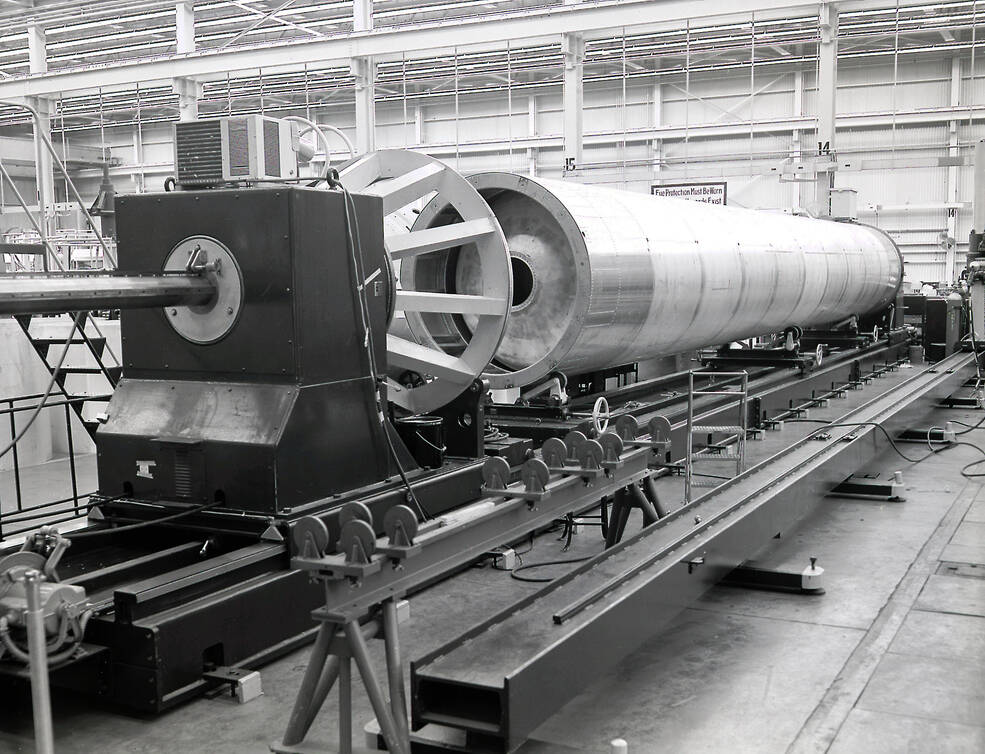
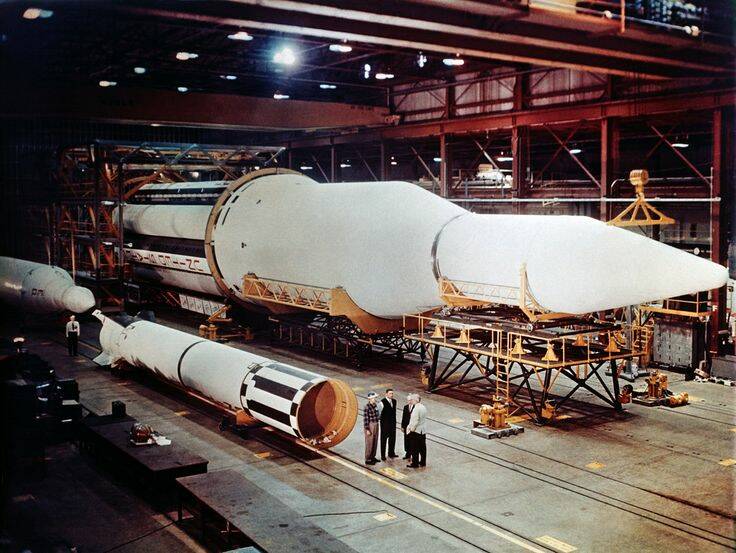 Left: A welding jig used for Redstone rockets prepares a fuel tank for a Saturn I booster stage. Right: A Saturn I rocket at right dwarfs a Redstone booster in the foreground and a Juno rocket at far left in a hangar at NASA’s Marshall Space Flight Center in Huntsville, Alabama.
Left: A welding jig used for Redstone rockets prepares a fuel tank for a Saturn I booster stage. Right: A Saturn I rocket at right dwarfs a Redstone booster in the foreground and a Juno rocket at far left in a hangar at NASA’s Marshall Space Flight Center in Huntsville, Alabama.
Anticipating the need for larger and more powerful rockets for America’s future plans in space, von Braun continued development of the Juno family of rockets. A version called Juno V clustered eight Redstone missile stages as propellant tanks around a central core. Using existing Redstone technology and tooling saved on development time and cost, while a new engine called H-1 provided additional thrust. To distinguish this new family of rockets from the earlier Juno variants, on Feb. 3, 1959, it received the name Saturn. Managers chose to produce a variant called the Saturn C-I, later simplified to Saturn I, and test fired the first one at the Redstone Arsenal on March 28, 1960. On July 1, management of the Saturn rockets transferred as the Arsenal merged into NASA’s newly established Marshall Space Flight Center. The first launch of a Saturn I rocket took place on Oct. 27, 1961, from Cape Canaveral’s Launch Pad 34. That first Saturn rocket rode on the legacy of the first Redstone launched more than eight years earlier. Saturn I and its later upgraded version the Saturn IB continued to fly until 1975, with a 100% success rate.
John Uri
NASA Johnson Space Center


























